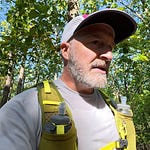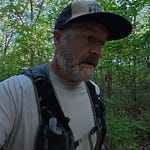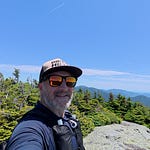As summer winds down and fall officially kicks off tomorrow, it's the perfect moment for a benchmark run to take stock of your fitness. For busy athletes like us—juggling careers, family, and training— these check-ins provide a clear picture without derailing your routine. My recent trail half-marathon served exactly that purpose: a low-stakes way to assess where I stand after a strong season, while breaking in some new gear along the way.
Over 25 years, I've come to rely on these end-of-season efforts to bridge into the off-season thoughtfully. This summer was packed with solid runs and adventures, culminating in the S.O.S. race two weeks ago. That event was a great validation of my prep over the summer - and I executed a perfect race for me. Treating this outing as a benchmark allowed me to simulate a race-like progression without going full throttle, offering insights into my durability and readiness for what's ahead.
To wrap up the season, I treated this trail half as a straightforward way to gauge my current fitness before the off-season sets in. Pacing-wise, I kept it controlled to mimic race-like buildup without redlining: the first 5K flowed by in a low 36 minutes, feeling efficient and dialed in. The second held steady at a low 37, still smooth without pushing too hard. By the third, it eased to 38.5, and the fourth landed in the high 38s—solid splits that gave me a clear snapshot of where I stand. Efforts like this highlight a key durability principle: stacking progressive sessions systematically to foster adaptations over time.
Layering in gear testing made this effort even more practical. I chose the Altra Olympus 275s for their first spin, drawn to the lightweight upper and ventilation that promised to handle trail conditions without overheating. On technical terrain, they felt super light, almost disappearing on my feet. Even as I sweat heavily, my feet remained relatively dry—not soaked, like they might be in the original versions. This kind of ventilation might seem subtle, but it adds up after a day of miles on the trail.
What ties this together is using a familiar route for benchmarking, which filters out variables, allowing you to focus on fitness signals and gear feedback. I've seen time-crunched athletes in their 40s and 50s thrive by prioritizing these selective sessions over random hard efforts. It's about applying exercise science practically—progressive overload—to sustain performance across seasons and years. Instead of overhauling your plan, a dedicated effort like this connects your summer base to the transition to the off-season, ensuring you don't lose momentum.
For durability over the long haul, it's these methodical check-ins that make the difference. They reveal whether your training has been effective. If adaptations aren't sticking, it might signal a need for a more recovery-focused approach moving forward—practical wisdom that has kept me performing without burnout.
As you face your own seasonal shift, try this framework: schedule a benchmark run on a standard route, track simple metrics like split progression and perceived effort, and use them to tweak one element—such as pacing. Note what it tells you about your fitness snapshot, then adjust your off-season accordingly. Small, systematic steps like these have extended my peak years, and they might help you maintain yours.










